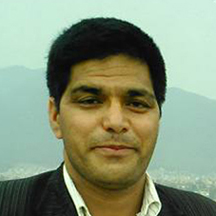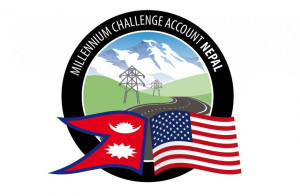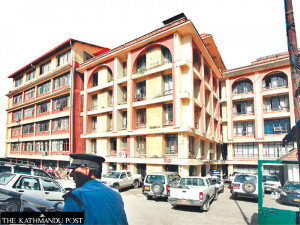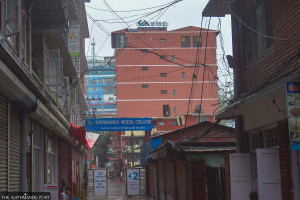National
Snakebite victims in Karnali die before reaching hospitals
Remote locations, lack of anti-venom, and poorly-equipped health facilities make survival difficult for victims.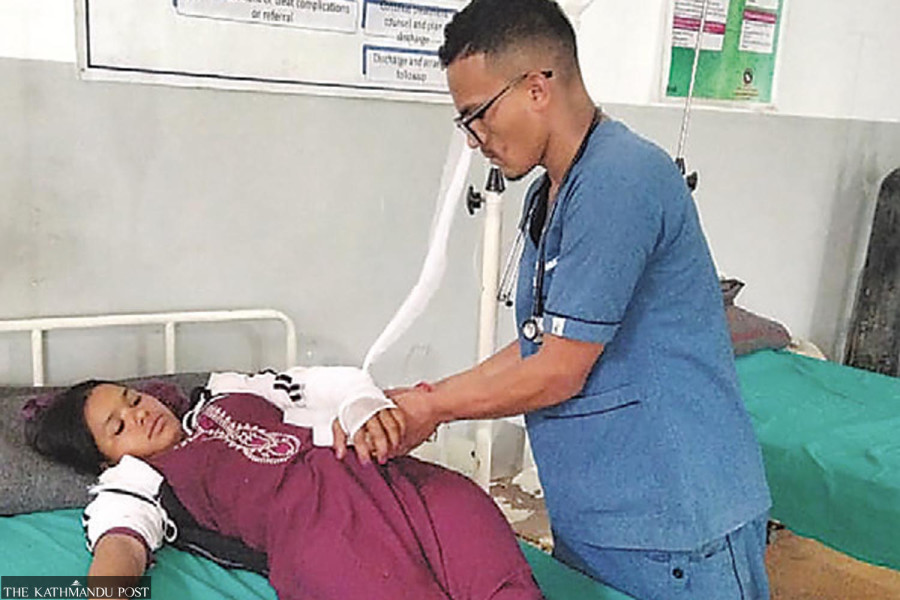
Tularam Pandey
At dawn on August 13, twenty-one-year-old Lokendra Karki was asleep inside his thatched-roof house at Karkiwada in ward 5 of Khadachakra Municipality in Kalikot when a snake sank its fangs into the index finger of his right hand. He screamed, which made his wife, Shanti Bista, who had given birth just five days earlier, awake. She rushed out, crying for help.
According to his relative Hasu Karki, Lokendra instinctively put his finger in his mouth, but panic soon swept through the house. Neighbours carried him uphill for over an hour to the Karnali Highway and then endured a three-hour journey to the district hospital in Manma. By the time they arrived, he was unconscious.
Snakebite deaths in Karnali province are often preventable, but due to long travel time, lack of anti-venom, and poorly equipped health facilities, many victims die before getting any treatment. In the province of ten districts, only Surkhet has the facilities to provide proper treatment, so many victims from outlying villages and districts have little chance of survival.
Doctors at Manma lacked the anti-venom and intensive care facility to treat him. So, they referred him to Birendranagar, the headquarters of Karnali province, some six hours away by road. Lokendra’s family could not afford a helicopter, so he was placed in an ambulance. But he died on the way at Kalyankandha, on the Dailekh–Surkhet border, at around 4 pm—eleven hours after being bitten.
“We had already lost precious time before he reached us. The family said they could not afford air transport. By the time the ambulance got him out of Dailekh, he was gone,” said Dr Shubha Narayan Thakur, who referred him to Surkhet.
On August 15, nineteen-year-old Jaumati Bishwakarma of Daha in ward 6 of Khadachakra in the district was cutting grass when a green snake bit her. She was rushed to Manma with her pulse tightly bound by a rope. Luckily, doctors confirmed it was a non-venomous snake and she survived.
But others have not been as fortunate. Last year, 30-year-old Manichandra Chaulagain of Dhadgaun in ward 5 of Khadachakra, was bitten by a snake while tending his vegetable garden. Like Lokendra, he was carried to Manma and then referred to Surkhet. He died on the way to Rakam, Dailekh.
Similarly, 26-year-old Dhan Prasad Acharya of Haudi in ward 6 of Shubha Kalika Rural Municipality narrowly escaped death. His village is so remote that it takes a full day on foot just to reach Manma. A helicopter was chartered for Rs500,000. He was flown to Surkhet within an hour, placed in intensive care for 15 days, and eventually survived. The local municipality had promised to cover the helicopter expenses but never paid, Acharya said.

Not everyone has the chance for an air rescue. Two years ago, Kesari Khadka, 35, from ward 1 of Pachhal Jharna Rural Municipality in the district died after her family first sought faith healers instead of a hospital. She collapsed on the way to Manma and died.
Snakebite cases are rising even in high-altitude districts of Karnali Province in recent years.
“Snakebite cases were rare in the past in Kalikot and other mountain districts of Karnali. The river basins here are hot, and snakes thrive there. Climate change has also shifted habitats—now we are seeing more venomous cases than before,” said Dr Thakur.
Of the total 10 districts of Karnali, only Surkhet has the facilities to treat snakebite cases. Proper treatment requires intensive care units, ventilators and anti-snake venom, which most district hospitals lack.
Dr Bishma Prasad Pokhrel, Kalikot’s health service chief, said venomous snakes are increasingly being found at lower altitudes in the district “Every rainy season we now receive several venomous cases each month. We urgently need a treatment centre in Kalikot,” he said. The district hospital has repeatedly requested anti-venom since last year, but nothing has been supplied.
As the local health facilities cannot treat snakebite patients, many villagers rely on shamans. “Even in Khadachakra, which is close to the district headquarters, two patients died after referral because Manma could not provide care,” said local teacher Dilli Chaulagain. “From more remote villages, it takes hours—sometimes days—just to reach the hospital.”
According to Katak Bahadur Mahat, information officer at Kalikot Health Office, 10 snakebite cases were reported in the district over the past five years, with three deaths officially recorded. “Snakebite needs rapid treatment, but in Karnali only Surkhet has proper treatment facilities,” Mahat said. “From Kalikot, Jumla, Mugu, Humla, or Dolpa, it takes anywhere from eight hours to two full days to reach Surkhet by road.”
Government guidelines issued in 2020 require snakebite treatment centres to have a doctor’s room, nursing station, patient beds, ventilators, oxygen cylinders, refrigerators, monitors, and at least seven medical staff including one medical officer. Kalikot Hospital has a new building, which has space to run a snakebite treatment centre. “If air evacuation were free—like the Safe Motherhood program—many lives could be saved. A dedicated treatment centre in Kalikot would make it even easier,” said Mahat.
For now, villagers remain trapped between distance, poverty, and inadequate healthcare. In monsoon months, snakes lurk in the grass and fields where people work daily. Without immediate access to anti-venom, survivors are the exception rather than the rule.
“Every life lost to snakebite in Karnali is a preventable death,” Pokhrel said. “Until proper treatment centres are established, families will continue losing loved ones on the road, long before they see a hospital bed.”




 20.9°C Kathmandu
20.9°C Kathmandu

